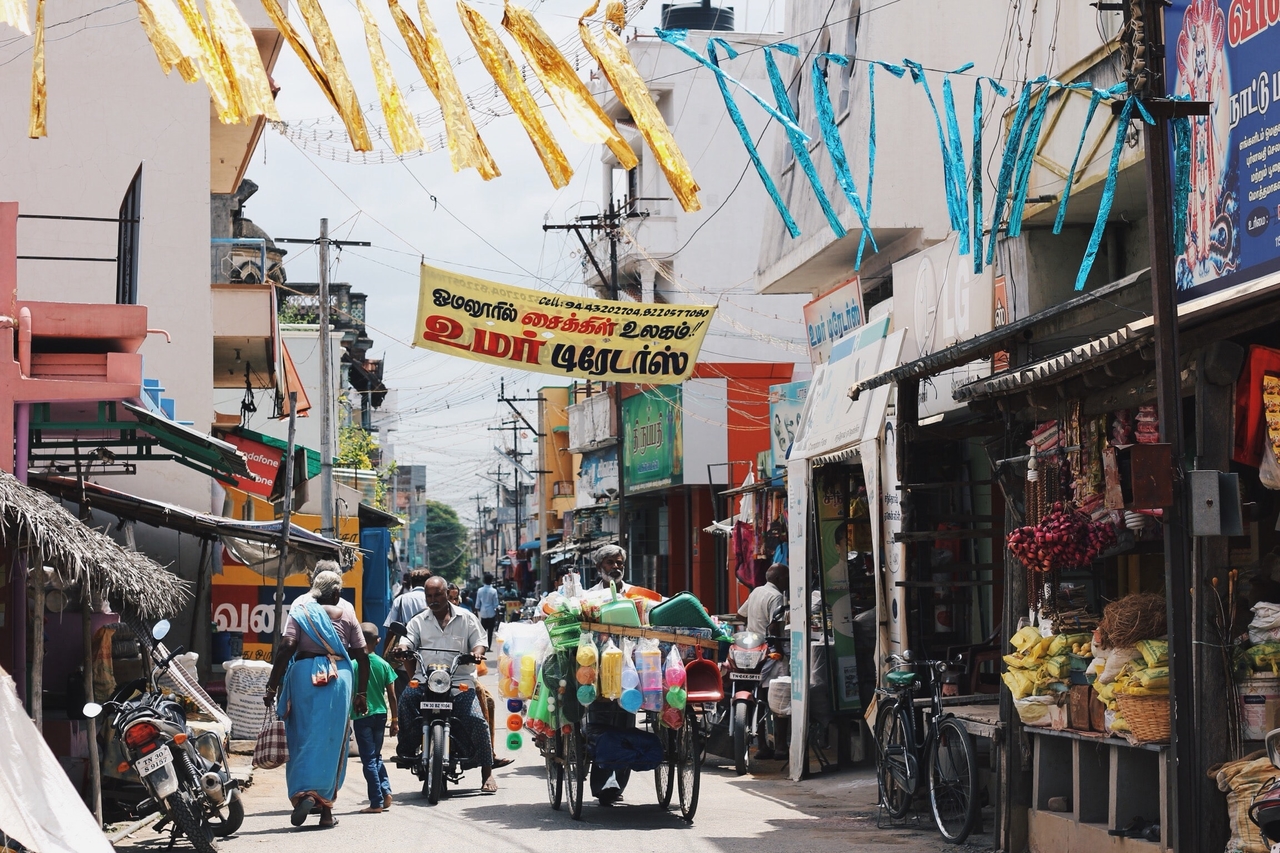Indian Economy Facing Crisis

India right now is passing through a difficult phase. The Asian country is fighting on two fronts-health due to coronavirus and the economy, which has been shattered by the lockdown imposed all over the country due to lethal coronavirus pandemic. Though India’s performance when it comes to managing coronavirus has been satisfactory, but on the economic front the government of Prime Minister Narendra Modi has failed to a great extent.
The so-called USD 265 billion stimulus package touted as one of the biggest in the world totalling around 10 per cent of the country’s GDP has failed to evoke good response both from the political parties, economists and research firms.
It was a known fact that India’s economy estimated at around $ 2.5-2.70 trillion would certainly take a toll on Indian due to the pandemic. Before this also India’s economy was not in a good shape that nationwide lockdown that started from March 24 midnight has compounded the problem even more. Narendra Modi led government it seems was never prepared to face this kind of crisis. Now it seems they are groping in the dark to find a way out to find a solution to the problem.
India’s Finance Minister Nirmala Sitharam for five days continued to announce economic package, daily covering one sector. But it seemed more of a budget speech rather than a relief package. How the share markets react to a package is one of the ways to understand its acceptability and the economic package has failed to enthuse the market. As on Monday, May 18, 2020 BSE Sensex opened negative and by mid-afternoon, it was down by almost 800 points.
According to the British brokerage firm Barclays Research, India’s balance sheet will bear only 0.75 per cent of GDP worth of expenditure from the Rs 20 trillion economic stimulus package announced by Finance Minister Nirmala Sitharaman in five tranches.
While some of the economists and industrialists are not happy with the package as it is nothing “more” then deferments and minor sops others including politicians from different political parties have termed it as nothing but mere announcements and change in policies that will never come on the ground.
Can India afford a protracted lockdown?
The answer is no. Package or no package, if forecast coming out from various top agencies are to be believed then India’s economy is likely to grow between zero and two per cent during this financial year ending March 31, 2021. Some of the economists have gone to an extent predicting a negative growth.
Whatever various predictions say, one thing is for sure, Indian economy has taken a severe beating and its effects are going to last long.
The lockdown effects can be gauged from the fact that If steps are not taken in the right manner then estimates suggest that millions, on a minimum side, may lose their jobs mainly in the unorganized sector. According to a report of the International Labour Organisation (ILO) in India, about 400 million workers in the informal economy are at risk of falling deeper into poverty during the crisis. Households are reporting an income drop as compared to the previous year. As per a report, 80 per cent of Indians have witnessed a dip in their earnings. According to data from other institutions, about 10 crores or 100 million Indians lost their jobs in a month after the lockdown was announced from March 24th midnight in the country.
A recent report by the Centre for Monitoring of Indian Economy (CMIE) is very disturbing as it says that the unemployment rate shot up to 27.1 per cent in the week ended May 3. This is the highest unemployment rate so far. The report says that even NASSCOM, India’s IT association with over 2,800 member companies, has warned of job losses.
CMIE, or Centre for Monitoring Indian Economy, is a leading and one of the most respected business information company in India.
It is a fact that India cannot afford a protracted lockdown. The lockdown in the country has now been extended to May 31 but with certain relaxations from May 17th midnight. Lockdown will now be approximately of around 67 days.
The lockdown according to certain studies did affect over 60-65 per cent of sectors of the Indian economy while only 35-40 per cent mainly the essential ones and some of the service sector were operational that too at marginal levels during the first, second and third lockdowns. In the fourth one that started from May 18, the majority of sectors will start to work but with much lower efficiency. As labour coming from different parts of the country has started to return to their villages, some of them walking barefoot thousands of miles and chances of this workforce returning to work in industrial units, shops or construction sites, where they were working earlier in the next few months, look remorse.
Farm sector, another sector and important for the Indian economy, has been very badly by the lockdown. There are reports that fruits and vegetables are not reaching the markets and farmers not getting their due price while other reports suggest that dairy farmers are feeling the pinch because of lockdown. Farmers are going through a very tough time. They are not getting a right or due price for their produce; on the contrary, they are being forced to sell commodities and their produce at very low or cheap price and they are suffering as they have to pay heavy interest on the loans they had taken.
Villages are India’s backbone and they contribute between 44-46 per cent to the country’s net domestic product, a really a big number. The farmers are demanding loan waiver and right produce for their products and rightly so.
The tourism sector, which contributes between 9-10 per cent to India’s GDP and provides employment, direct and indirect both, to over 42.673 million people has also been hit hard. Special package is necessary for this sector.
One thing which many people in India feel that when hotels can be provided for quarantine facilities why can’t they be opened for travellers and domestic tourists, obviously with certain precautions. It will provide big relief to hoteliers and give revenue to the government.
One has to remember that coronavirus threat still looms large so while starting economic activities or farming activities in a big way, things like social distancing or better to call it physical distancing, wearing of masks, hand wash, sanitization and regular check of the workforce are to be made mandatory till a cure or vaccine is found. Everyone knows that life will not be the same till cure or vaccine is available, which is likely to take some time, if not years then at least some months.
What is the solution?
The solution lies in giving more money in the hands of the general public to spend. Indian economy is primarily a consumption-driven economy. Private consumption expenditure has over the years formed nearly three-fifths of the Indian economy. In layman’s language, the economy thrives on spending.
More money in the hands of the general public means more spending, which will give a boost to manufacturing and other sectors. Cutting on salaries/wages or incomes may prove to be counterproductive. Even the announcement by India’s central government and certain other state government to freeze dearness allowance (DA) till next year is not a good step. The Dearness Allowance (DA) is a calculation on inflation and allowance paid to government employees, public sector employees (PSE) and pensioners in India.
Giving more in the hands of people living in rural areas through MNREGA is another good step, Mahatma Gandhi Employment Guarantee Act 2005 (MGNREGA), is an Indian labour law and social security measure that aims to guarantee the ‘right to work’. This act was passed in September 2005.
It aims to enhance livelihood security in rural areas by providing at least 100 days of wage employment in a financial year to every household whose adult members volunteer to do unskilled manual work.
The Union government will also have to start to boost capital expenditure and put more money on building infrastructure or rather take up the work of infrastructure development like the building of roads, bridges, buildings and other assets in a big way. As it will not only help in building infrastructure but will also provide jobs to thousands if not in millions.
Looking at this, though some of the economists might not agree to these viewpoints, the best part would be to pump more money into the economy, forget about fiscal deficit and inflation for the time being. Cheap loans, financial relief package for the industries and the poor, focus more on the agriculture sector and working capital relief among other such sops for SMEs (Micro, Small & Medium Enterprises) maybe some of the ideas to be followed religiously.
It is rightly said that ‘every the crisis is an Opportunity in Disguise’ and because of the coronavirus crisis India is now looking at strengthening the health sector, which so far was not given due importance. At least this sector and FMCG (Fast-moving consumer goods) sectors are right now doing somewhat better.
Anil Sharma















